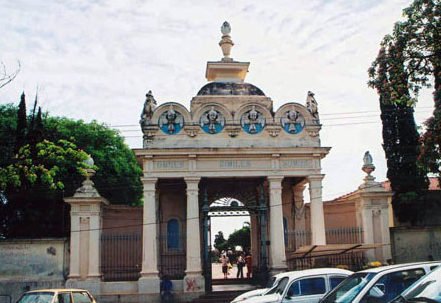Cemitério da Saudade
Piracicaba (São Paulo – SP)
Piracicaba (São Paulo – SP)
In 1766, the captain-general of São Paulo, Don Luís Antônio de Sousa Botelho Mourão, committed Antônio Corrêa Barbosa to found a village at the mouth of the Piracicaba River. The captain chose the place where some settlers and Paiaguás Indians had already set up. The village would be a support for the boats that went down the Tietê River and also a rearward of the supplies for the Iguatemi Fort, on the border of Paraguayan territory. Piracicaba was officially founded on August 1st, 1767, boundary of Itu village, under the name of Our Lady of Pleasures. In 1877, through a petition signed by the city councilor Prudente de Moraes, who later on was the first civilian president of Brazil, the city name was officially changed to Piracicaba.
In 1881 the Central Mill was founded at the margins of the Piracicaba river, which would become the biggest sugar-mill in Brazil in the coming years. In 1900 the city emerged as one of the largest poles of the State of São Paulo. For a long period during the twentieth century, Piracicaba suffered a long stagnation due to the end of the coffee cycle and the fall in the sugar cane price. From the 1970 on they started to work hard on leveraging the economy of Piracicaba. Industrial districts were created and new businesses came to town. The Saudade Cemetery in Piracicaba was inaugurated in 1872. The cemetery is the second to be erected in the outskirts of the city to replace the holy field of the Brotherhood of Our Lady of Good Death. At the beginning of the twentieth century, the Saudade Cemetery was restored, its streets were changed but a few tombs were kept in the previous lots. In 1971 the Park of the Resurrection was inaugurated, a garden cemetery model. In 2006, according to the Secex data (Department of Foreign Trade) Piracicaba is nominated the ninth municipality in value of exported products. The city has recorded good rates of development, by restoring degraded areas, investing in biotechnology and products to export, an investment in its future development.

The Cemetery of Saudade is located on Piracicamirim Avenue and Independence Avenue, an area of 145,000 m². Previously the arrangement of its space had the Independence Avenue Gate as the main point but today it is secondary , that explains the peculiar position of the Father Galvão Paes de Barros tomb, which is currently out of alignment, once the chapel would be built there. Today, its structure has 90 blocks with approximately 13,500 concessionary graves. There are two toilets and a main chapel.

So many illustrious people are buried in the Cemetery of Saudade in Piracicaba. Related to political affairs we highlight the first civilian president of the republic Prudente José de Moraes Barros and Senator Manoel Moraes Barros. Also the Brazilian painter of the second half of the 19th century, José Ferraz de Almeida Jr. and the Italian architect Serafino Corso who designed the Artistic Gate of this Cemetery. Leandro Guerrini, who worked for the “Gazeta de Piracicaba”- Gazette of Piracicaba and “Jornal de Piracicaba” – The Newspaper of Piracicaba – is also buried there. He is the author of the classic book “History of Piracicaba in comics.”
He was a member of the Brazilian Society of Theater Authors, the Piracicabana Academy of Arts and Historical and Geografic Institute of Piracicaba. It is also important to highlight Thales Castanho de Andrade who became The Secretary of Education of the State of São Paulo, member of the Paulista Academy of Arts and founder of juvenile literature in Brazil with his book “The daughter of the forest” (1919). One should also remember those who helped in the construction and on the maintenance of the “Santa Casa” – Holy House in the 20th century, as the Baron of Rezende, Baron of Serra Negra and maintainer José Pinto de Almeida.

The Cemetery of Saudade has an Artistic Gate (1906) that causes great impact on the walkers, which it is like an invitation to get into this secular cemetery. Inside this semi-public space we can see very few funerary monuments built in the 19th century (neoclassical, eclectic), but many that were constructed during the 20th century (art dèco and modern) what help us to understand the symbolic meaning of death.
Observe the beauty of the floor of Central Avenue that leads to a neoclassical style Chapel and to the many tombs covered with sacred scenes painted on the tiles, as to strengthen the place´s protection. Many local marble yards rendered lots of services to the cemetery. Examples: Longo Brothers from Amparo; Carrara Marble Yard with subsidiaries in Araras, Piracicaba and Laranjal Paulista.



Cemetery is a cultural institution of the Western society. The preservation of its heritage is one way to legitimize it, as well as artistics and cultural activities carried on in situ.
+ 55 62 3225 5957 | + 55 62 996 143 427
E-mail: maelizia@terra.com.br

 Cemitério Municipal de Casa Branca
Cemitério Municipal de Casa Branca 



